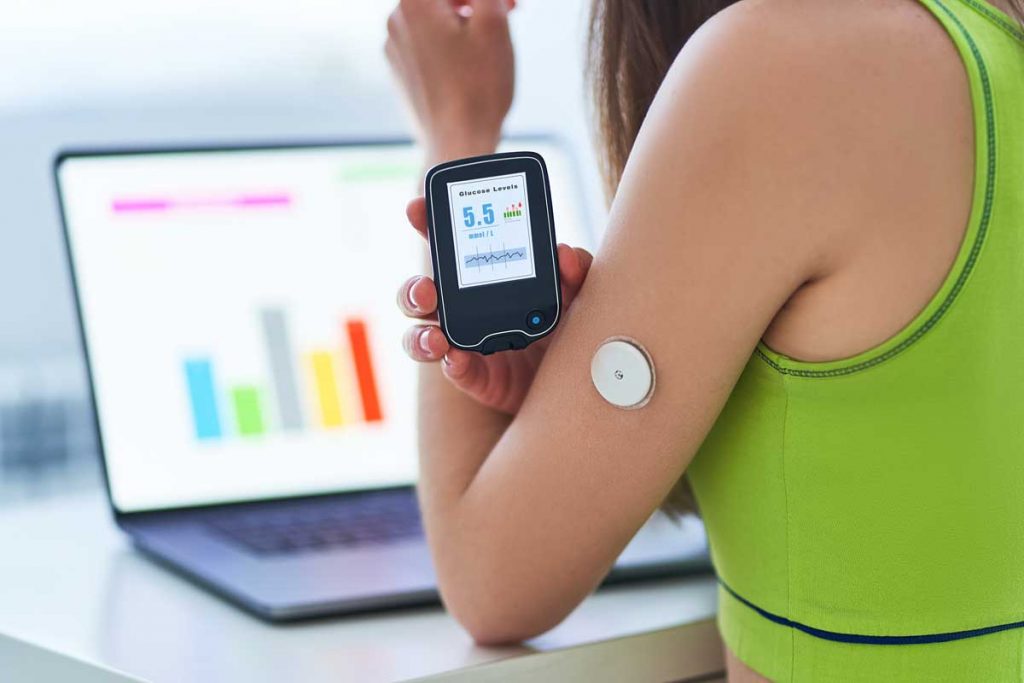
Continuous Glucose Monitoring (CGM) systems have revolutionized the management of diabetes by providing real-time data on blood glucose levels. These devices offer a significant advantage over traditional methods such as fingerstick testing, allowing for continuous monitoring without the need for frequent manual measurements. However, like any technology, CGM systems come with their own set of advantages and disadvantages, which are essential for users and healthcare providers to consider. Here, we delve into the pros and cons of continuous glucose monitoring.
Pros:
Real-time Monitoring:
One of the most significant advantages of CGM is the ability to monitor blood glucose levels continuously in real-time. This provides users with immediate feedback on how their lifestyle choices, such as diet and exercise, affect their glucose levels, enabling them to make timely adjustments to maintain optimal control.
Early Detection of Hypo and Hyperglycemia:
CGM systems alert users to both high and low blood glucose levels, allowing for early intervention. This is particularly crucial for individuals with diabetes who may be unaware of dangerous fluctuations in their blood sugar levels, which can lead to severe complications if left untreated.
Improved Glycemic Control:
Studies have shown that the use of CGM systems can lead to better glycemic control compared to traditional monitoring methods. By providing more comprehensive data on glucose trends throughout the day and night, CGM helps users and healthcare providers make informed decisions about medication dosages, diet modifications, and lifestyle changes.
Reduced Hypoglycemic Events:
CGM systems can significantly reduce the risk of hypoglycemic events by providing early warnings when blood glucose levels are dropping rapidly. This allows users to take proactive measures to prevent severe hypoglycemia, such as consuming carbohydrates or adjusting insulin dosages.
Convenience and Ease of Use:
Unlike traditional fingerstick testing, which requires frequent manual measurements, CGM systems offer a convenient and non-invasive way to monitor blood glucose levels continuously. Many CGM devices are also compatible with smartphone apps, allowing users to view their data conveniently on their mobile devices.
Cons:
Cost:
One of the most significant drawbacks of CGM systems is their cost. These devices can be expensive, and not all insurance plans cover them. Additionally, there may be ongoing costs associated with sensor replacement and device maintenance, making CGM systems inaccessible to some individuals with diabetes.
Accuracy Issues:
While CGM systems have improved significantly in terms of accuracy, they are not infallible. Factors such as sensor calibration, sensor placement, and interstitial fluid lag can affect the accuracy of CGM readings. Users should be aware of these limitations and use CGM data as a guide rather than relying solely on it for making treatment decisions.
Skin Irritation and Allergic Reactions:
Some users may experience skin irritation or allergic reactions at the site of sensor placement. This can be particularly problematic for individuals with sensitive skin or those who need to wear the sensor for an extended period. Proper skin care and rotation of sensor placement sites can help mitigate these issues.
Data Overload:
Continuous glucose monitoring generates a vast amount of data, which can be overwhelming for some users. Without proper education and support, users may struggle to interpret their CGM data effectively and make informed decisions about their diabetes management. Healthcare providers play a crucial role in helping users navigate this data overload and develop personalized treatment plans.
Technical Challenges:
CGM systems rely on technology, which means they are susceptible to technical glitches and malfunctions. Sensor errors, transmitter issues, and software bugs can disrupt the accuracy and reliability of CGM data, leading to frustration and inconvenience for users. Adequate technical support and troubleshooting resources are essential for addressing these challenges promptly.
conclusion
continuous glucose monitoring offers numerous benefits for individuals with diabetes, including real-time monitoring, improved glycemic control, and reduced risk of hypoglycemia. However, it is essential to weigh these advantages against the potential drawbacks, such as cost, accuracy issues, and technical challenges. Ultimately, the decision to use CGM should be based on individual needs, preferences, and resources, with guidance from healthcare professionals. With proper education, support, and vigilance, CGM can be a valuable tool for empowering individuals with diabetes to manage their condition effectively and improve their quality of life.
